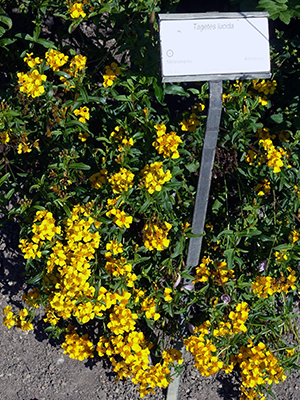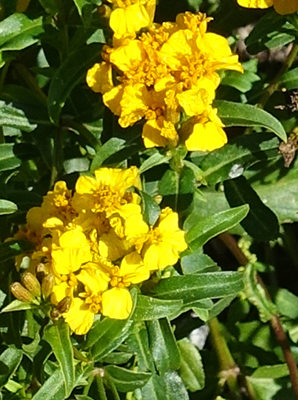Mexican Tarragon

Mexican tarragon (Tagetes lucida) is a great perennial herb for Florida gardeners. With a flavor similar to traditional French tarragon, but a better tolerance for drought, heat, and humidity, Mexican tarragon is a winner in the Southern herb garden.
While better-known French tarragon (Artemisia dracunculus) is notoriously difficult to grow in warm climates, Mexican tarragon—native to the Southwest US and Mexico—tolerates the heat and humidity of Florida’s summers. Its anise-like flavor is very similar to its French cousin, and the bright flowers are a delight in fall. Add to all these great qualities the fact that Mexican tarragon is easy to care for, and you have an herb garden winner.
Characteristics
Mexican tarragon, also called mint marigold or Mexican marigold, has bright green narrow leaves and small golden-yellow flowers and is beautiful in herb gardens or mixed in with annual and perennial plants. This semi-woody herb forms a small, upright bush that grows to be 2 to 3 feet tall.
The leaves have a complex flavor and fragrance with a mild likeness to anise/tarragon, coupled with notes of mint, cinnamon, and a touch of sweetness. The flowers can be used to brighten up salads. Use the flavorful leaves fresh; drying and excessive heat cause them to lose flavor, so as with most herbs, add them to hot dishes at the end of cooking. For long term storage Mexican tarragon does best when frozen or stored in vinegar. Beyond using it as a tarragon substitute you can use the fresh leaves to flavor drinks or make herbal teas; the Aztec people used it in cocoa drinks.

Both Mexican tarragon and French tarragon belong to the plant family Asteraceae. Some individuals develop contact dermatitis when handling certain plants in this family, so use caution with Mexican tarragon if you have this sensitivity.
Planting and Care
Plant Mexican tarragon in full sun using small plants or seeds planted at a very shallow depth. The seeds take about two weeks to germinate, so don’t fear if you don’t see plants popping up right away. While it is drought tolerant once established, it will grow best with occasional irrigation. Used as an annual in cooler climates, Florida gardeners are lucky enough to enjoy Mexican tarragon year-round. A hard freeze will kill it to the ground, but the plant usually recovers in the spring.
Like many herbs, this plant will need very little attention. Just be sure you aren’t clipping too much off for your culinary creations and Mexican tarragon will reward you with fresh flavorful leaves for quite a while.
